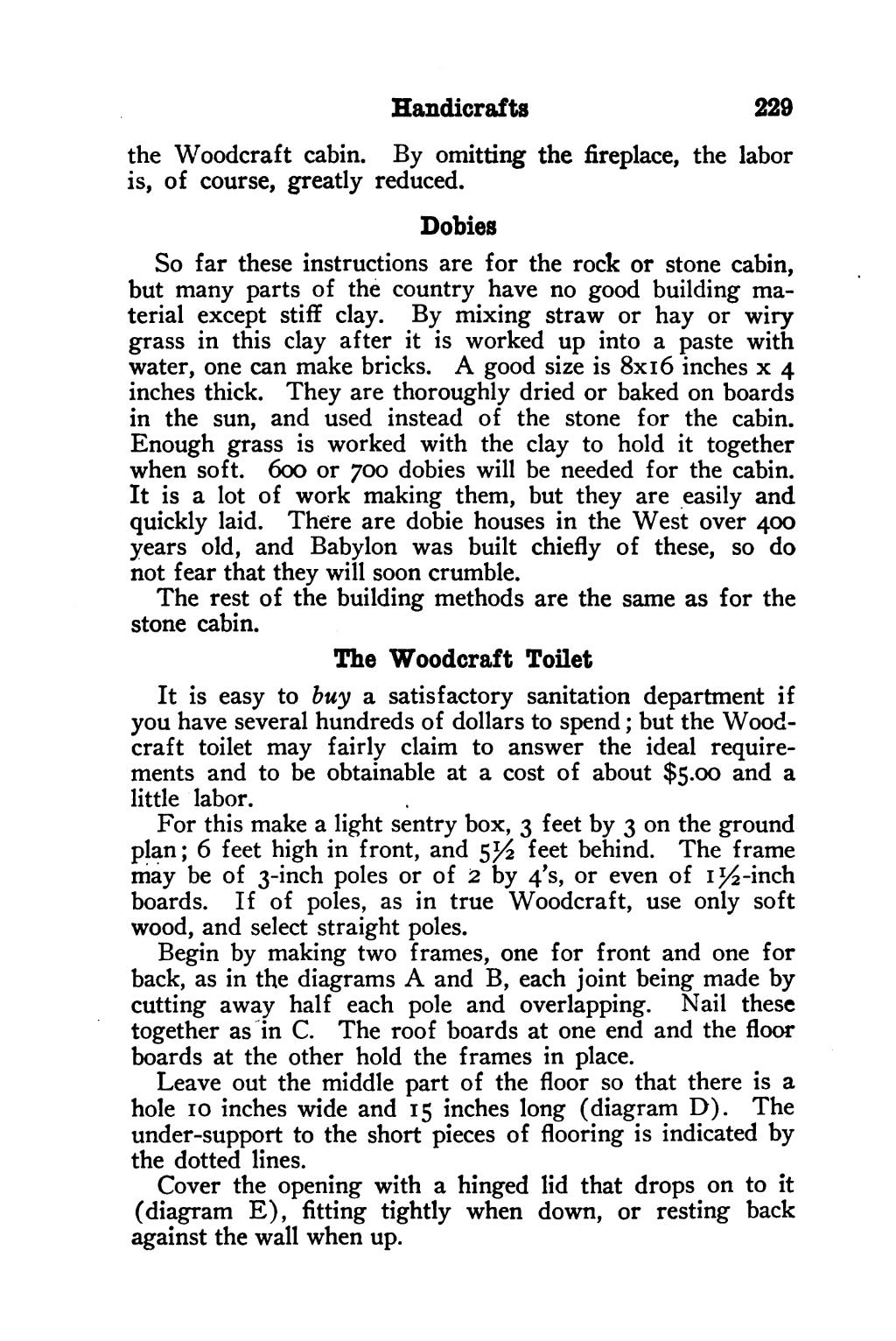Handicrafts 229 the Woodcraft cabin. By omitting the fireplace, the labor is, of course, greatly reduced. Dobies So far these instructions are for the rock or stone cabin, but many parts of the country have no good building ma- terial except stiff clay. By mixing straw or hay or wiry grass in this clay after it 1s worked up into a paste with water, one can make bricks. A good size is 8x16 inches x 4 inches thick. They are thoroughly dried or baked on boards in the sun, and used instead of the stone for the cabin. Enough grass 1s worked with the clay to hold it together when soft. 600 or 700 dobies will be needed for the cabin. It is a lot of work making them, but they are easily and quickly laid. There are dobie houses in the West over 400 years old, and Babylon was built chiefly of these, so do not fear that they will soon crumble. The rest of the building methods are the same as for the stone cabin. The Woodcraft Toilet It is easy to buy a satisfactory sanitation department if you have several hundreds of dollars to spend ; but the Wood- craft toilet may fairly claim to answer the ideal require- ments and to be obtainable at a cost of about $5.00 and a little labor. For this make a light sentry box, 3 feet by 3 on the ground plan; 6 feet high in front, and 5 Vf, feet behind. The frame may be of 3-inch poles or of 2 by 4’s, or even of 14-inch boards. If of poles, as in true Woodcraft, use only soft wood, and select straight poles. Begin by making two frames, one for front and one for back, as in the diagrams A and B, each joint being made by cutting away half each pole and overlapping. Nail these together as in C. The roof boards at one end and the floor boards at the other hold the frames in place. Leave out the middle part of the floor so that there is a hole 10 inches wide and 15 inches long (diagram D). The under-support to the short pieces of flooring is indicated by the dotted lines. Cover the opening with a hinged lid that drops on to it (diagram E), fitting tightly when down, or resting back against the wall when up.
Stránka:roll 1931.djvu/245
Z thewoodcraft.org
Tato stránka nebyla zkontrolována
